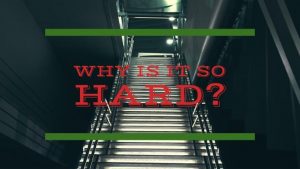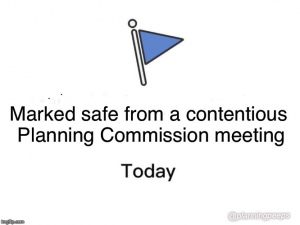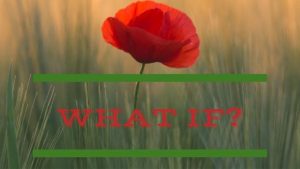This guest blog is by Meredith Reynolds, the Manager of Park Planning & Partnerships for the city of Long Beach, CA.

As my jurisdiction’s parks manager responsible for park planning, partnerships and engagement, I’m part of a staff cohort participating in racial equity training provided by the Government Alliance on Race and Equity, a national network of governments working to achieve racial equity and advance opportunities for all.
An important component of this training is unpacking how racial inequities are not random, but rather created and sustained over time and how our government policies and processes can perpetuate discrimination, limit access to opportunities and significantly impact our health.
This is particularly true of our government engagement processes, which ironically is the opposite of the representative democracy our governments are based on.
While perhaps not always specifically designed to be unavailable to certain facets of our communities, the fact is the lack of access to public engagement processes have become a structural barrier. This barrier exists for those from immigrant communities that do not speak English, those below the poverty line who work several jobs to make ends meet, and those who do not own cars.
These populations are generally communities of color. But removing barriers to public engagement also helps others we don’t necessarily think about, like the adult who is caring for their elderly parent, or the senior who is physically unable to leave their home, or children who’s input is often overlooked, or even the parent who transports their children to and from after-school activities then makes dinner and helps with homework.
Folks from these communities have valuable things to contribute about how they use our cities. Removing barriers to participation means governments can provide inclusive opportunities to participate in public processes that build trust and demonstrate empathy.
Understanding this critical information is fundamental to informing public programs and services. On the other hand, not involving facets of our communities have significant consequences.
We have seen community opposition stop long-range plans and development projects, oust City leadership, and last week we learned that not even Amazon is immune to community opposition.

If we know engagement is so fundamental to our government processes, why is it so hard…
…It can be hard because engagement can be seen as a “checking the box” activity – or worse – the thing to do only once a community is upset and opposing one of our decisions.
…It can be hard because community engagement is seen as a ‘nice to have’ when budgets allow, but is one of the first things to be cut when governments face deficits.
 …It can be hard because we have only ever experienced poor interactions with our community that informs and perpetuates our feelings about future interactions.
…It can be hard because we have only ever experienced poor interactions with our community that informs and perpetuates our feelings about future interactions.
…It can be hard because we don’t have good tools or training to understand how to structure, schedule and communicate our engagement activities to have effective community conversations.
…It can be hard because our organizations have not gained the community’s trust.

But what if we change our perspective… let’s play ‘What If’. What if our engagement prioritized people so that engagement was a fundamental part of our government processes?
…It would mean engagement is a core service with an annual budget allocation for engagement activities designed to build trust. Imagine how this could change the way the Departments prioritizes community engagement in developing programs and services desired by the public. Could this lead to a better distribution of Department resources to structurally address issues of equity?
…It would mean that our organizations start by asking the community for their input that would inform and influence process outcomes. Imagine how this could lead to development of innovative programs or services that solves our most pressing community struggles. Could this lead to an increased use of our services and programs increasing program-related revenue?
…It would mean engagement is included in capital project budgets and timelines as a matter of course. Imagine how project design would be informed by actual user experience and develop a sense of ownership that motivates our community to be good stewards of public assets. Could this lead to increased use of our public spaces thereby reducing vandalism or crime?
…It would mean engagement is connected to our public information efforts, which would be done in the languages our community speaks and be available in our community where people spend their time. Imagine how this shows our community that their voice counts and they have a seat at the table. Could this increase the community’s level of engagement?
…It would mean engagement is included in staff’s annual work objectives and part of annual performance evaluations. Imagine how our daily work would revolve around building productive relationships with the community and what that might do to our ability to successfully do our jobs. Could our level of stress (and associated health impacts) be reduced if the community supported our work?
Sure, some of you may think this is unattainable or unrealistic, but lately I’ve grown tired of the “constraints” and “reality” I’ve come across in my career – they can cloud judgment and distract from what could be.
The constraints have developed as a part of the same structures I am trying to change, which means they are only as limiting as I allow them to be.
I listen to a lot of music and recently I came across the song ‘What If’ by India Arie. The powerful lyrics praise civil rights pioneers who spoke out against injustice and paved the way for communities of color.
The song’s bridge boldly suggests “We are the ones we’ve been waiting for, we can change the world.” In working toward systems change, it is clear that long-term shifts start with individuals taking small steps that lead to larger coalitions that develop significant momentum toward removing barriers.
Whether we realize it or not, as local government professionals we posses power to take the small steps that remove barriers and build trust with our communities. So, I’m raising my hand to say yes to the ‘What if’, and signing up for meaningful work that gets us there.
